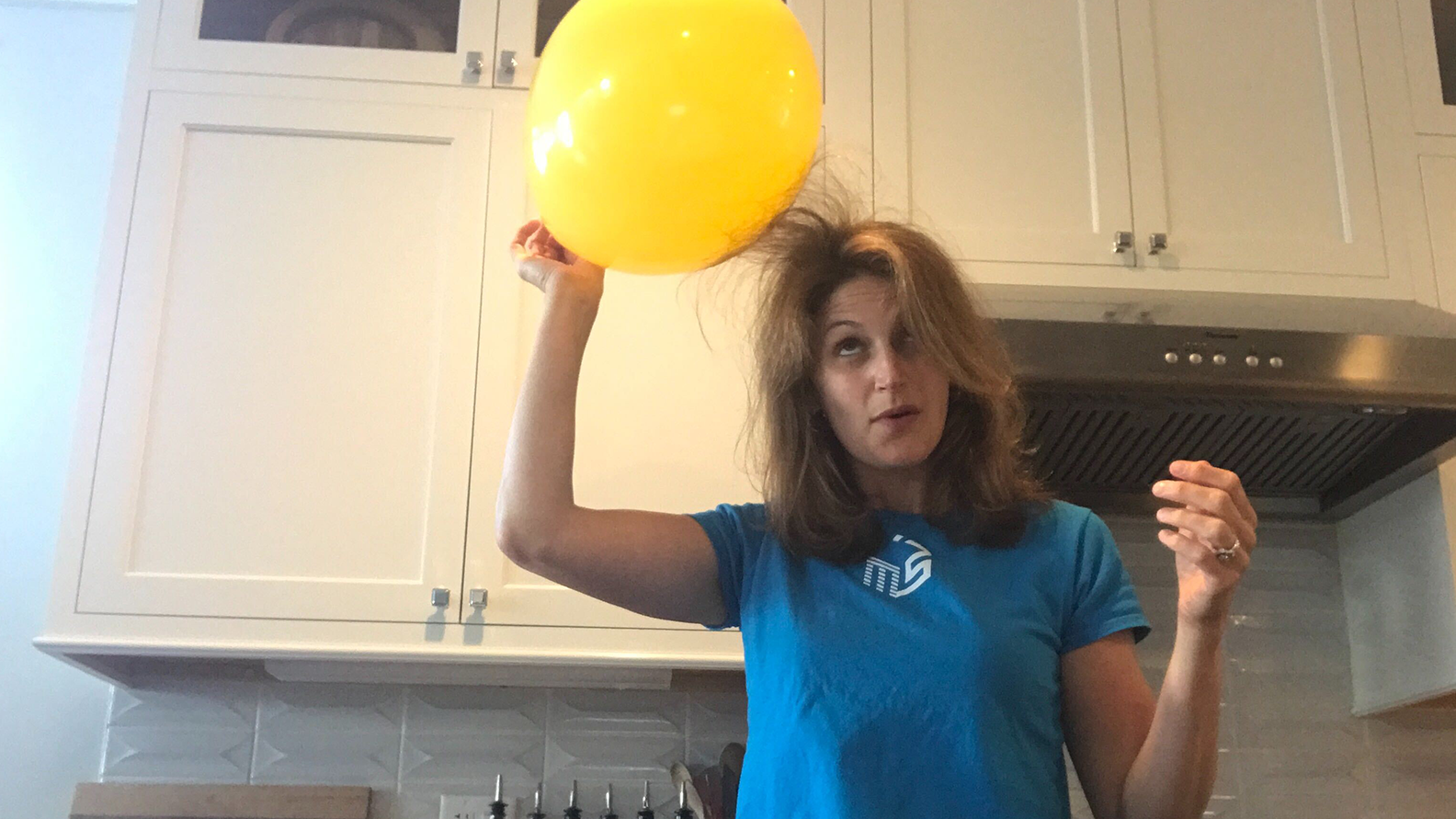Static Cling
Watch as static electricity makes small objects leap to your balloon. Or is it the other way around?

Materials
- Balloon
- Paper
- Hole punch
- Styrofoam peanuts
- Puffed rice cereal (such as Rice Krispies)
- Various small items such as pepper, thread,
pieces of tape, cup of water, paper clips - Charts (optional) (PDF)
Directions
This activity is done in stations. Set up the stations like this:
Station 1: Hole punch and piece of paper
Station 2: Styrofoam peanuts
Station 3: Puffed rice cereal
Station 4: Various small items (this station should be last)
Choose a variable to test, either the size of the balloon or the number of times you rub the balloon on your hair. Blow up the balloon. You will use the same balloon at each station.
Station 1: Experiment with the balloon and pieces of paper punched out with the hole puncher. How can you make the paper attract the balloon? Note: Some hair products will prevent a balloon from being charged. If you are having trouble with this, use a fuzzy piece of cloth like fleece or felt, or rub the balloon on carpet.
Station 2: Experiment with the balloon and peanuts. How can you make the peanuts attract the balloon? How does the attraction of the peanuts compare to the paper?
Station 3: Experiment with the balloon and cereal. How can you make the cereal attract the balloon? How does this attraction compare to the peanuts and paper?
Station 4: Select one of the items to test. Predict the outcome of the interaction between the balloon and that item. How does that attraction compare to the items at the other stations?
What's happening?
Materials develop static charges. This happens due to the transfer of electrons from one object to another. Everything has a tendency to either want to hold on to its electrons or give them away. This tendency is why we have static electricity. When two objects – such as your hair and the balloon – rub together, one loses some of its electrons to the other. This makes one object positively charged and the other object negatively charged. The opposites then are attracted to each other.
The balloon is charged by rubbing it on your hair. When you put it near a neutral object (paper, Styrofoam or puffed rice cereal), the electrons in the object repel away from the balloon and the protons are attracted to the balloon. This movement of the electrons causes the neutral object to get a low positive charge. The negatively charged balloon is then attracted and will “stick” to the object.
Extension
Brainstorm other ways you can change the balloon, such as dipping it in water or another substance, putting something inside the balloon, etc. What hairstyling products will prevent static electricity on a balloon?
Vocabulary
Static electricity
An electrical charge that piles up on an object instead of flowing through it.
Electron
One of the particles that make up an atom. Electrons are negatively charged.
Proton
One of the particles that make up an atom. Protons are positively charged.
Background information
There are two types of electric charges, positive and negative. Charges that are the same (positive and positive or negative and negative) push each other away, or repel. Charges that are opposite (positive and negative) draw one another together, or attract. An object with an excess of positive charges attracts negative charges until the numbers are equal again.
Static electricity results from unbalanced charges that move abruptly from one place to another, rather than flowing in a current. In an object with no charge, all the atoms have their normal number of electrons. If some of the electrons are then transferred to another object by the two objects rubbing together, touching, or coming within close proximity of one another, the charges become unbalanced. One item loses some of its electrons to the other item and becomes positively charged (i.e. it has more protons than electrons). The item that received the electrons becomes negatively charged (it has more electrons than protons). Since the two items have become oppositely charged, they are attracted to one another.
The term “static” can be misleading. When the charges build up on an object and there is a path for the electricity to follow (i.e. the objects touch or come very close to one another), a brief flow of electricity in the form of a spark occurs.